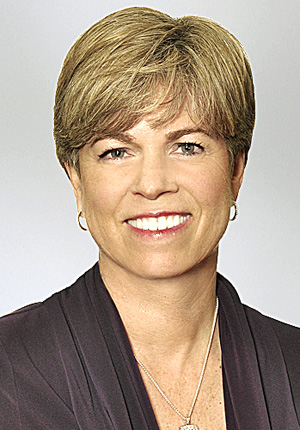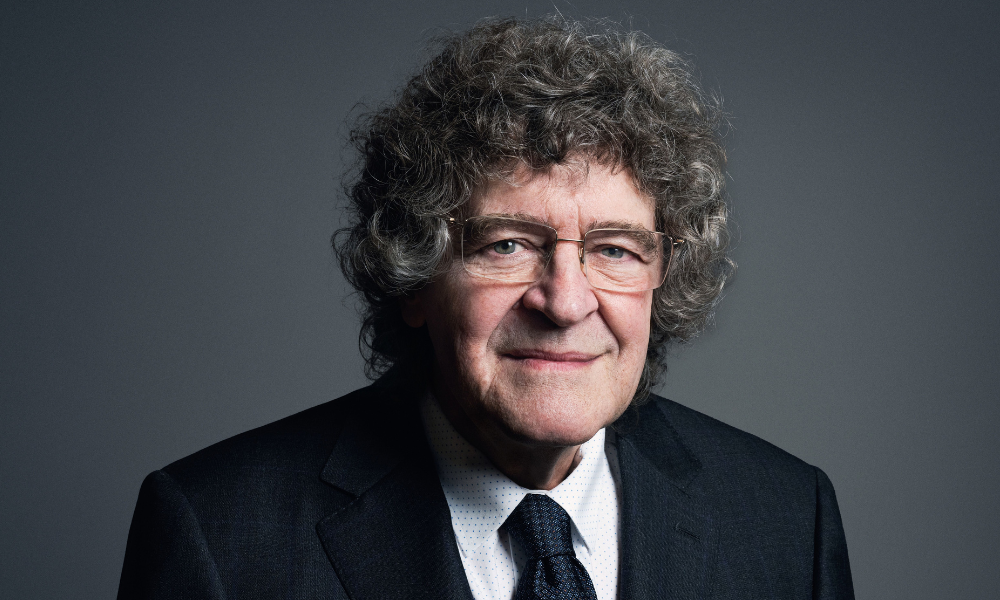Law firms feeling the pressure to do things differently are pushing at the boundaries of how law is practised, often driving new developments inside and outside of the firm.
 Osler Hoskin & Harcourt LLP’s chief knowledge officer Mara Nickerson says that includes looking for opportunities on how the firm can do things differently to reduce the legal spend but also expose the firm’s lawyers to innovations.
Osler Hoskin & Harcourt LLP’s chief knowledge officer Mara Nickerson says that includes looking for opportunities on how the firm can do things differently to reduce the legal spend but also expose the firm’s lawyers to innovations.
“The business environment has changed, which means the environment for our clients has changed around how we practise,” says Nickerson.
“It’s really very driven by the industry and the market and the need to reduce the cost of providing legal services.”
Osler has a practice management and innovation initiative that focuses on the way lawyers practise. And the firm has partnered with the Legal Innovation Zone at Ryerson University to expose its lawyers to some of the developments that are underway in the legal industry and to get early access to some of the startups and their tools while raising the firm’s profile on the innovation front.
The firm has conducted hackathons with clients and partners using design thinking, there have been internal events to bring awareness to some of the innovation going on in the industry and it has introduced new technology as well.
Nickerson says successful innovation at her firm includes the access privacy group’s online tools for clients and the competition group’s merger notification analysis.
“We recognize that [in] this changing legal industry, in trying to introduce innovation and change the way we practice with our clients and internally, it is a change management initiative and we actually have a change management consultant,” says Nickerson.
“So we’re trying to provide an environment internally where we’re not just saying, ‘Hey, you’ve got to change, figure it out by yourself,’ but where they can come up with ideas and we are there to support them and help them.
“In the end, any change is going to be driven largely by our clients and by the imaginations of our lawyers, but the underlying fundamental issue is the need to bring down the cost of how we provide legal services,” says Nickerson. Key for many firms is bridging that gap between legal and technology.
That led to the development of a suite of services provided by Cassels Brock & Blackwell LLP’s e-discovery and information governance team called Leading E-dge. It was designed to use the best available technology combined with the firm’s expertise to achieve cost-efficient legal services.
Marlon Hylton, the firm’s head of discovery management, says Leading E-dge was developed with an eye to creating value for clients through innovation. It also has an application to due diligence on the corporate side, he says.
“We need to have the expertise, the technology and the processes in place to handle any proceeding, any legal matter, that engages issues of information,” says Hylton.
The firm has an interdisciplinary team of people who understand the law as well as technology, particularly information analytics, which they apply to the firm’s legal needs. By bridging technology and legal, the team focuses on issues involving electronic information and what clients need to do with that to be compliant with laws, legislation and rules.
“What we’re doing is a very proactive move given where things are going in the market,” says Hylton. “We wish to be one of the leading firms living in the future in the present.”
Mark Tamminga leads innovation initiatives for Gowling WLG LLP and is convinced that the new lawyers will need to know more than just law. They need to be computer literate and know how to use technology to advance the legal profession, he says. The firm recently brought engineer Rick Kathuria on board as national director of project management and legal logistics, says Tamminga.
The firm has started to open up its project management systems to clients in a way where clients can see how much has been spent on a matter and how much work has been done.
Gowling also works closely with vendors to co-develop and test products, such as Elevate Services, which created the firm’s project management software. The law firm served as co-developer and primary tester; in return, the product was tuned for Gowling’s specific needs.Tamminga sees many more possibilities for the future.
Taking advantage of its presence in its Waterloo, Ont. office, the firm has been working with software vendors and dealing with their coders to get access to tools early on and have them customized for the firm’s needs.
“It’s going to be much more important to understand what data analytics are about, how artificial intelligence, cognitive computing, how that works. If you don’t think computer science is important, you’re wrong, it is important. And law firms need to step up to that level,” says Tamminga.
Globally, Dentons has stepped outside the firm by creating Nextlaw Labs as an autonomous external company focusing on developing legal innovation initiatives, says its CEO, Dan Jansen. Nextlaw Labs has become involved in launching companies such as QualMet, a quality metrics company that measures the effectiveness of lawyers. The goal for Nextlaw Labs is to drive innovation into Dentons and earn a return on investment.
“This $600-billion global [legal] industry has been pretty slow to adopt technology and therein lies the opportunity,” says Jansen, a non-lawyer who describes himself as a serial entrepreneur. Jansen sees some areas in law that are ripe for innovation, such as expert legal research, matter management, better transparency and quality metrics/performance assessment. In its first one-and-a-half years, Nextlaw Labs has started or become involved in 12 companies, and it envisions doubling or tripling that in the next year or two.
“I think Nextlaw Labs could be a pretty significant player in the legal industry,” says Jansen.
“Our business is reinventing law and I think we have a lot of growth ahead of us. If this was fintech, I’m 10 years too late. If this was alternative advertising models, I’m probably 20 years too late. Different industries evolve at different rates. . . . the legal profession, its business model hasn’t changed significantly in many years. And it’s about to.”
 Osler Hoskin & Harcourt LLP’s chief knowledge officer Mara Nickerson says that includes looking for opportunities on how the firm can do things differently to reduce the legal spend but also expose the firm’s lawyers to innovations.
Osler Hoskin & Harcourt LLP’s chief knowledge officer Mara Nickerson says that includes looking for opportunities on how the firm can do things differently to reduce the legal spend but also expose the firm’s lawyers to innovations. “The business environment has changed, which means the environment for our clients has changed around how we practise,” says Nickerson.
“It’s really very driven by the industry and the market and the need to reduce the cost of providing legal services.”
Osler has a practice management and innovation initiative that focuses on the way lawyers practise. And the firm has partnered with the Legal Innovation Zone at Ryerson University to expose its lawyers to some of the developments that are underway in the legal industry and to get early access to some of the startups and their tools while raising the firm’s profile on the innovation front.
The firm has conducted hackathons with clients and partners using design thinking, there have been internal events to bring awareness to some of the innovation going on in the industry and it has introduced new technology as well.
Nickerson says successful innovation at her firm includes the access privacy group’s online tools for clients and the competition group’s merger notification analysis.
“We recognize that [in] this changing legal industry, in trying to introduce innovation and change the way we practice with our clients and internally, it is a change management initiative and we actually have a change management consultant,” says Nickerson.
“So we’re trying to provide an environment internally where we’re not just saying, ‘Hey, you’ve got to change, figure it out by yourself,’ but where they can come up with ideas and we are there to support them and help them.
“In the end, any change is going to be driven largely by our clients and by the imaginations of our lawyers, but the underlying fundamental issue is the need to bring down the cost of how we provide legal services,” says Nickerson. Key for many firms is bridging that gap between legal and technology.
That led to the development of a suite of services provided by Cassels Brock & Blackwell LLP’s e-discovery and information governance team called Leading E-dge. It was designed to use the best available technology combined with the firm’s expertise to achieve cost-efficient legal services.
Marlon Hylton, the firm’s head of discovery management, says Leading E-dge was developed with an eye to creating value for clients through innovation. It also has an application to due diligence on the corporate side, he says.
“We need to have the expertise, the technology and the processes in place to handle any proceeding, any legal matter, that engages issues of information,” says Hylton.
The firm has an interdisciplinary team of people who understand the law as well as technology, particularly information analytics, which they apply to the firm’s legal needs. By bridging technology and legal, the team focuses on issues involving electronic information and what clients need to do with that to be compliant with laws, legislation and rules.
“What we’re doing is a very proactive move given where things are going in the market,” says Hylton. “We wish to be one of the leading firms living in the future in the present.”
Mark Tamminga leads innovation initiatives for Gowling WLG LLP and is convinced that the new lawyers will need to know more than just law. They need to be computer literate and know how to use technology to advance the legal profession, he says. The firm recently brought engineer Rick Kathuria on board as national director of project management and legal logistics, says Tamminga.
The firm has started to open up its project management systems to clients in a way where clients can see how much has been spent on a matter and how much work has been done.
Gowling also works closely with vendors to co-develop and test products, such as Elevate Services, which created the firm’s project management software. The law firm served as co-developer and primary tester; in return, the product was tuned for Gowling’s specific needs.Tamminga sees many more possibilities for the future.
Taking advantage of its presence in its Waterloo, Ont. office, the firm has been working with software vendors and dealing with their coders to get access to tools early on and have them customized for the firm’s needs.
“It’s going to be much more important to understand what data analytics are about, how artificial intelligence, cognitive computing, how that works. If you don’t think computer science is important, you’re wrong, it is important. And law firms need to step up to that level,” says Tamminga.
Globally, Dentons has stepped outside the firm by creating Nextlaw Labs as an autonomous external company focusing on developing legal innovation initiatives, says its CEO, Dan Jansen. Nextlaw Labs has become involved in launching companies such as QualMet, a quality metrics company that measures the effectiveness of lawyers. The goal for Nextlaw Labs is to drive innovation into Dentons and earn a return on investment.
“This $600-billion global [legal] industry has been pretty slow to adopt technology and therein lies the opportunity,” says Jansen, a non-lawyer who describes himself as a serial entrepreneur. Jansen sees some areas in law that are ripe for innovation, such as expert legal research, matter management, better transparency and quality metrics/performance assessment. In its first one-and-a-half years, Nextlaw Labs has started or become involved in 12 companies, and it envisions doubling or tripling that in the next year or two.
“I think Nextlaw Labs could be a pretty significant player in the legal industry,” says Jansen.
“Our business is reinventing law and I think we have a lot of growth ahead of us. If this was fintech, I’m 10 years too late. If this was alternative advertising models, I’m probably 20 years too late. Different industries evolve at different rates. . . . the legal profession, its business model hasn’t changed significantly in many years. And it’s about to.”







